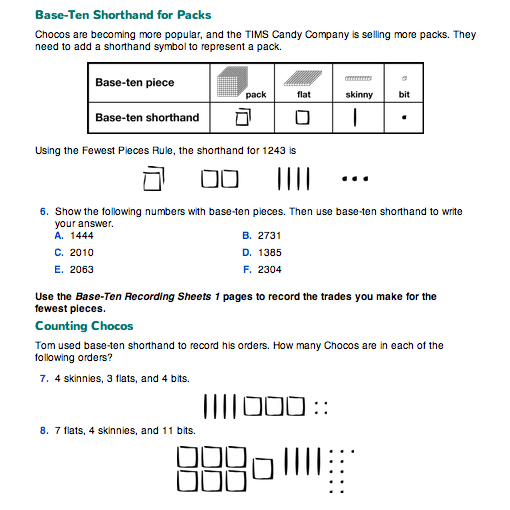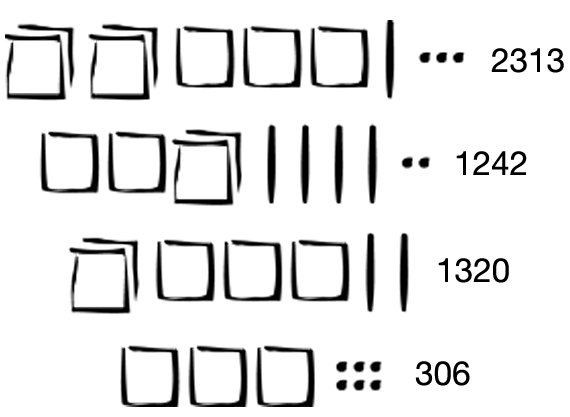Thousands, Hundreds, Tens, and Ones
Est. Class Sessions: 1–2Developing the Lesson
Part 2. Show a Number Different Ways
Show Partitions with Base-Ten Pieces. Ask students to work in pairs to use their base-ten pieces to represent 1356 using the Fewest Pieces Rule. Students should represent this by 1 thousand (pack), 3 hundreds (flats), 5 tens (skinnies), and 6 ones (bits).
Then ask:
As in Lesson 2, be sure students understand that when trading pieces to find new partitions, the total number of Chocos remains the same. For example, they can also represent 1356 with 13 flats, 5 skinnies, and 6 bits by trading 1 pack for 10 flats. They must be sure to take away the pack when they trade it for 10 flats.
Direct students' attention to Questions 4–5 in the Packaging Large Orders of Chocos section in the Student Guide. Several partitions for 1243 are shown in the table. Ask students to model the partitions using the base-ten pieces. Have students work in pairs to answer Questions 4–5. Question 4 involves writing number sentences to match the partitions shown. This helps students understand that the same number is represented by the different partitions.
Show Partitions with Base-Ten Shorthand. It is sometimes more convenient to draw base-ten pieces than to work with actual pieces as students did in Lesson 2. Base-ten shorthand is a quick way to draw base-ten pieces. Introduce the symbol for the pack as shown in the table in the Base-Ten Shorthand for Packs section of the Student Guide.
Draw numbers in shorthand as shown in Figure 1 and ask students what number is represented.
Ask students to represent several numbers in base-ten shorthand; for example, 35, 167, 205, 354, 807, 1345, and 1003. Note that it is not necessary to draw the blocks in order. Students may find it helpful to model a number with base-ten pieces first, then transcribe it into shorthand.
Have students solve the problems in Question 6. After representing the numbers with base-ten pieces, they then represent them with shorthand to practice using this notation.














